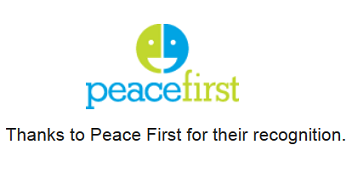Carole Larkin, from Third Age Services in Dallas TX was asked these common questions by a student at Goddard College. Her answers are very informative.
By Carole Larkin
Alzheimer's Reading Room
Q. If Alzheimer’s cannot actually be determined until viewing the brain after death, does that mean all current Alzheimer’s cases are actually only presumed?
If so, is there a proper medical term for this?
A. In my opinion, it’s kind of a cop out to say that Alzheimer’s can’t be determined until autopsy. PET scans show beta amyloid collecting in the brain, and beta amyloid is considered to be one of the main biomarkers of Alzheimer’s, by a good percentage of current researchers. You can measure Tau, another naturally produced protein and another generally recognized biomarker of Alzheimer’s disease by doing a spinal tap. Atrophy of the brain (a sign that brain cells have died in a certain area of the brain), can be seen on an MRI. Given the right diagnostic procedures, neurologists, geriatricians and geriatric psychiatrists can diagnose Alzheimer’s at over a 90% accuracy rate. The deal is that most people don’t get a “proper” diagnosis. They go to their family physician; he or she asks a few questions of the patient, throws some Aricept at the patient and says “I’m done with you. You’re on your own. Good luck.
Subscribe to the Alzheimer's Reading Room
Email:
Q. Does there seem to be a correlation between a personality type and people who get Alzheimer’s? (Is an introvert more likely to be affected than an extrovert?
A. As far as I can tell, personality type has zero correlation to getting Alzheimer’s. It’s a biological disease not a psychiatric or psychological disease. Most current research points to beta amyloid plaques and tau tangles in neurons (brain cells) to be the biologic markers of the disease. These two are normal proteins that we have in our bodies, and that we need for our continued existence. For some reason, they go haywire and start killing brain cells. Research is trying to figure out why this happens and how to stop it or fix it.
Q. In my research, I have found that chronic stress, anger, neurosis and holding in emotions can possibly contribute to Alzheimer’s. Do you agree with this?
Absolutely not! Like I said in my answer to the last question, Alzheimer’s is a biologic disease. I can tell you though, that a person with these attributes before the disease stands a better chance of becoming a nightmare to those caring for them. Sometimes the disease works in a way that people become more of themselves. If they were nasty before, then all they become is double nasty. Some caregivers are lucky though, their person becomes the opposite of what they were before. In other words nice, for the most part. You never know which way it will work out. I’ll tell you this much; if I’m a caregiver, I’m praying for the second scenario! I find the description of chronic stress, anger, neurosis and holding in emotions far closer to describing the caregiver than the care receiver.
Q. Does retreating into one’s own head (becoming quiet, shy, withdrawn) worsen symptoms?
A. Retreating into one’s own head, as you put it, is many times a symptom of the disease itself. The disease can strike area of the brain where our ability to communicate comes from. That means that people can lose the ability to recall words they used to know, or lose the ability to know the meaning of words, thus substituting an incorrect word for another word in speaking. Also, in the beginning of the diseases people can be/are aware that they have deficiencies in their speech. Therefore, to save themselves from embarrassment, they simply stop speaking as much. That seems to be a natural enough reaction to me. Not particularly helpful in the long run, but useful to the person in the moment.
Q. Does depression worsen symptoms? If so, would antidepressants ever be prescribed to assist?
A. An excellent question! Absolutely depression can proceed or coexist with a dementia. Some research points to depression being a risk factor for dementia. I don’t know about that, but I’ve seen a number of cases where someone with dementia and depression was treated for the depression, and it helped their mood. I have also seen where doctors have treated depression instead of dementia. Those treatments didn’t help the memory issues at all, and became less effective on the behavioral issues, as more neurons died. I guess the easiest thing to say is it varies with each individual.
Q. At what point does a patient lose the ability to understand that they have Alzheimer’s?
A. excellent question! Some people never understand that they have Alzheimer’s or another dementia. It’s called Anosognosia (a lack of ability to know that they have a disability). The portion of the brain that controls our awareness about ourselves is damaged by dying neurons. Biologically they can’t know that they have a cognitive illness. That’s different than denial. Denial is a purposeful thought process that rejects something they inherently know to be true. Some people do know and are aware that something is wrong with their thinking processes. They may not know exactly what it is, but they know that something is not right, that they are different than other people. Some people will say “I have Alzheimer’s” some will say I have memory problems” or any one of a number of similar things. It’s really depends on the individual. I can say that if someone understands that their thinking is impaired, it happens fairly early in the diseases. Sometimes the knowledge stays with them months or years, sometimes not. It depends upon how fast the disease proceeds and which portions of the brain become impaired.
Q. Are visual cues (photo albums, trinkets, memory books) recommended as memory aides? Might these cues become upsetting to a patient in later stages and be taken away?
A. Very early in the disease visual cues are useful to a certain extent, but as the disease goes on their usefulness begins to fade. That is because of two reasons: one, the mental connection of the object to the memory related to it begins to fade and two; the meaning of the object itself may become not understandable to the person. For example; a souvenir of a boat may represent a cruise that the person has taken, but if the person no longer understands what a boat is, then they would not be able to make the mental jump to a memory of their own that happened on a boat (cruise). Some individuals may become perturbed if they were reminded by an individual that they were on a boat like this, and they didn’t remember it, but much more often they wouldn’t believe the other person when they said that they had on the boat. Their thought process would go something like this, “I’d remember if I were on a boat that looked like this. Since I don’t remember it, it couldn’t have happened. Therefore this other person is lying to me.” The thought that they couldn’t remember events doesn’t enter their minds. (More of the lack of self awareness thing.) The objects may not be upsetting, they just may be ignored, it’s the other person insisting that they did something that they know (in their minds) that they did not do that needs to go. The person is the antagonist, not the thing. That said simplifying a person with dementia’s surroundings is a good thing later on in the diseases because too many things to look at could cause visual overstimulation which then becomes confusing to the person and may result in agitation or anger as a behavior displayed to others.
Q. When a patient does not recall a person, is it recommended to introduce yourself, even if the result might be upsetting the patient? (i.e.: “I am your wife.” Or “I am your son/daughter.
A. I think that it all depends on the individual with the dementia. Some people would not be upset learning for the first time (to them) that they had a son or daughter or husband or wife or aunt or uncle, and so on. Others will get very upset being told that they have any of the above because they may think that they are a different age than they really are (usually younger) and they couldn’t be married or have any children because the are too young (if they thought that they were twelve for instance). Or perhaps they know that they know you, but they are just not sure of how they know you, or if you have a relationship to them. You could start by simply stating your name, as in; Hi, I’m Emily and I’m a person who (likes) loves you very much. That way, you skirt around the relationship issue while making them feel good, because someone feels warmly toward them. It’s about respect for the individual, and not pointing out their deficiencies. It’s not like they can do something to fix their memory loss, so why point it out to them? All it can do is hurt their feelings.
Q. caregiving, is there an increased amount of concealing things/telling “little white lies” patients to keep from upsetting them? Do you have any examples?
A. I suppose they could be called “lies”, but to me, they are told because the person telling the person with dementia loves that person and doesn’t want them to be hurt. We can’t change the bad things that happen to people, but we can soften the blow to people who love them and would get upset, anxious, cry and grieve every time they were told of the bad event. I call that “compassion”, not “lies”.
The classic example is of course the person with Alzheimer’s or a related dementia asking where a spouse or sibling or child is, and in fact the person has died (sometimes many years ago). Telling them the “truth”, i.e. the person is dead could cause the person with dementia immediate grief, as if their loved one had died that second. Deeper into the diseases (say early mid-stage) when the person cannot record and keep new information, they may ask twenty times a day, “where is {so and so}”; how cruel would it be to tell them twenty times that {so and so} is dead, so that they grieve twenty times a day? Now it’s a different story if they didn’t like the person who is dead. You see? It’s all about sparing someone who is very vulnerable feelings that hurt.
Carole Larkin MA,CMC,CAEd,QDCS,EICS,
is a Geriatric Care Manager who specializes in helping families with Alzheimer’s and related dementias issues. She also trains caregivers in home care companies, assisted livings, memory care communities, and nursing homes in dementia specific techniques for best care of dementia sufferers. ThirdAge Services LLC, is located in Dallas, TX. Read More....









































